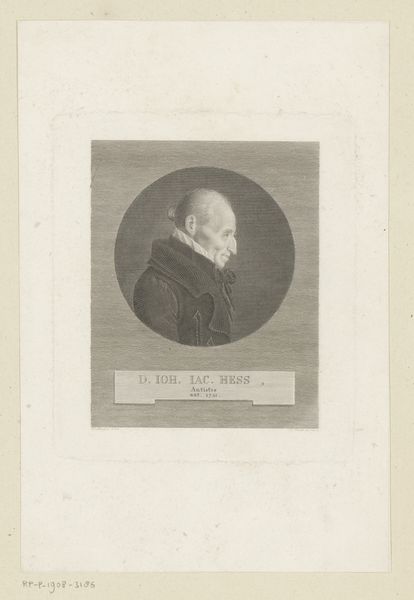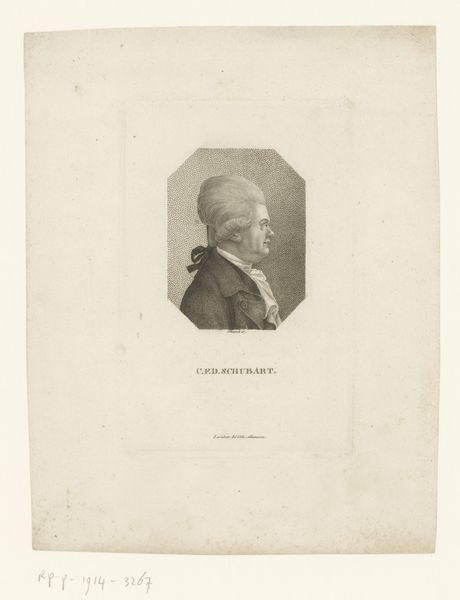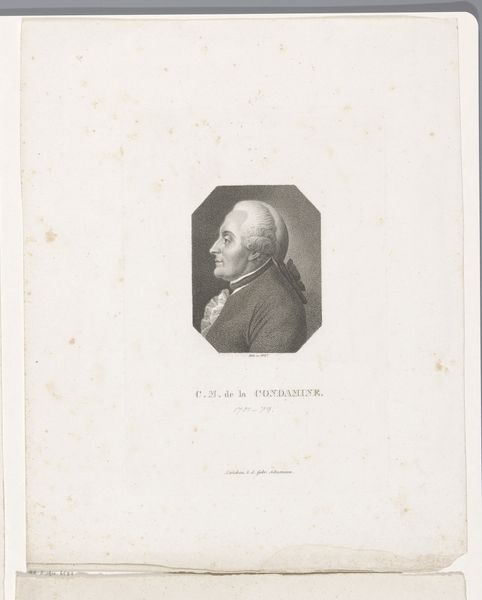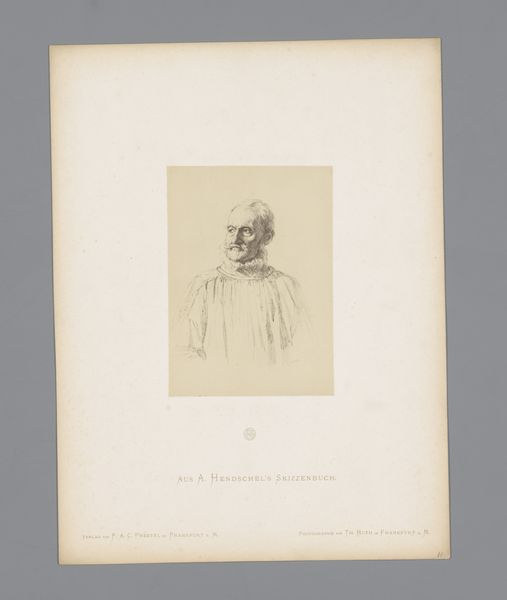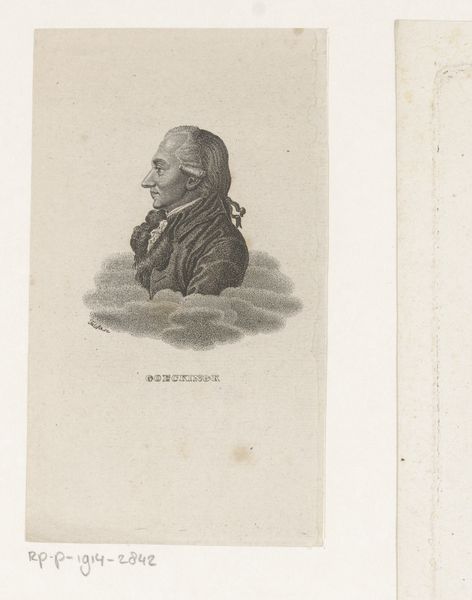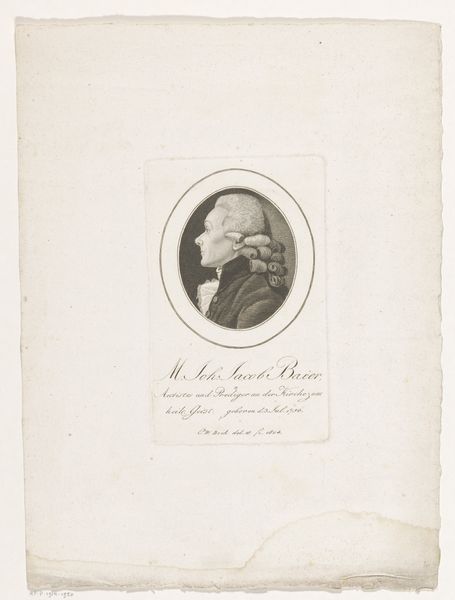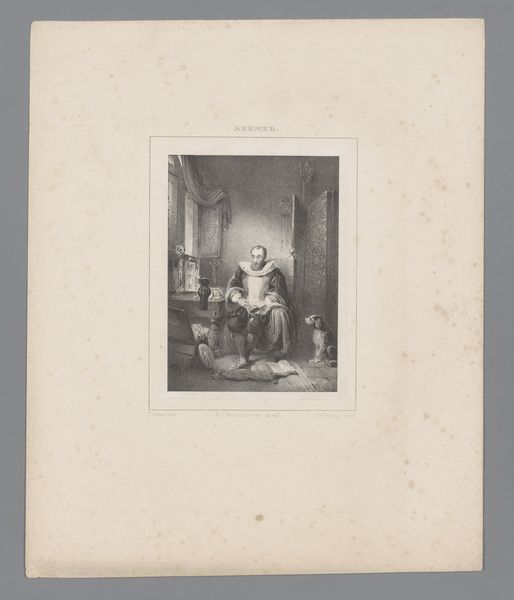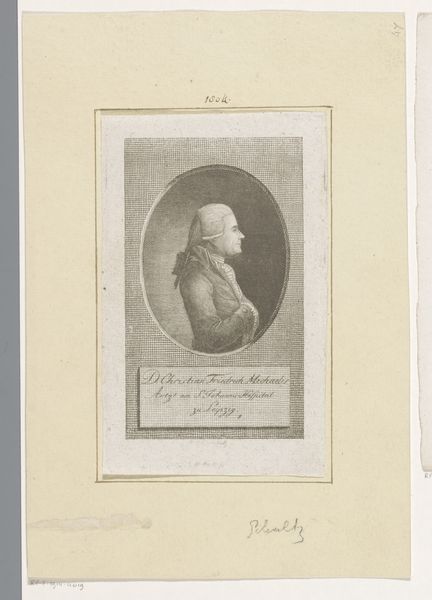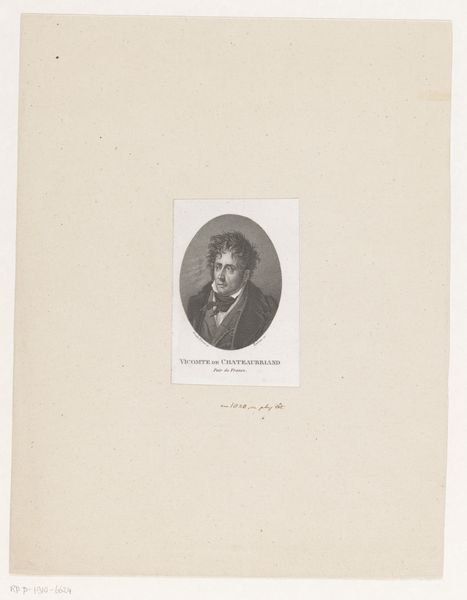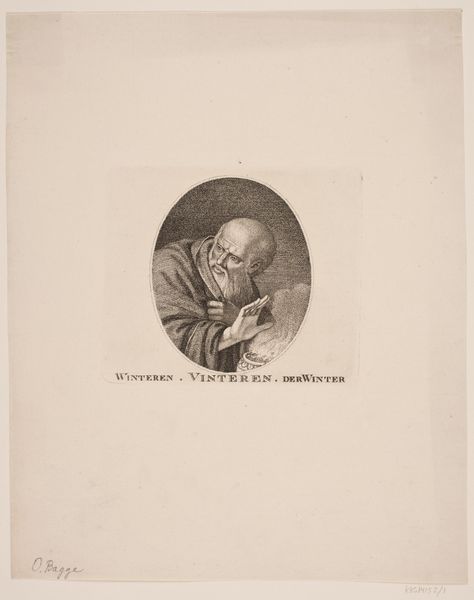
drawing, print, engraving
#
portrait
#
drawing
#
neoclacissism
# print
#
engraving
Dimensions: height 190 mm, width 118 mm
Copyright: Rijks Museum: Open Domain
Curator: Let's discuss this engraving titled "Portret van Christian Garve," dating roughly from 1818 to 1832. It's an intriguing neoclassical portrait, wouldn't you agree? Editor: Indeed. The most immediate quality, before even noting its neoclassical origins, is its severity, an almost melancholic dryness. The composition confines the subject within that unusual octagonal frame, further emphasizing that air of constraint. Curator: The confinement you've observed is central to understanding its form. Note the artist's meticulous stippling and line work to achieve gradations in tone and shadow. The sharp, clean lines emphasize structure and order, characteristic of neoclassical aesthetic principles. Editor: And that severity surely speaks to something deeper, I imagine. Garve must have represented something akin to stern morality, public service, or austere virtue, if such careful rigor and sharp delineation are put to the service of portraying him. Curator: Precisely! Christian Garve was a renowned philosopher of the Enlightenment, so portraying him with seriousness and intellectual weight would align with the cultural values of that period. The very lines we observe here also form a lasting image in the cultural memory. Editor: He is presented in profile, too. Such profiles remind viewers, consciously or unconsciously, of ancient Roman coin portraits of emperors, all serious intent and civic responsibility. The costume certainly reinforces the notion of this image participating in that iconographic lineage. Curator: Excellent point about the classical profile. Furthermore, the subtle details, the texture in the coat and the meticulous rendering of his hairstyle, show an attentiveness characteristic of Enlightenment ideals – reason and the observable. Editor: The stipple method lends it an almost ethereal presence, a disembodied mind floating on the page. But those details and the lines have clearly lasted; this neoclassical iconography proved particularly resilient and influential as it was repurposed again and again throughout the centuries. Curator: It certainly has had a lasting impact. Considering how the artist has worked and shaped this piece allows a different view of neoclassicism in general, beyond just academic principles. Editor: Well, considering this particular approach gives a rather austere window onto the 19th Century mindset, doesn’t it? There’s almost no comfort here. A visual symbol meant to instruct, to serve, to remember.
Comments
No comments
Be the first to comment and join the conversation on the ultimate creative platform.
